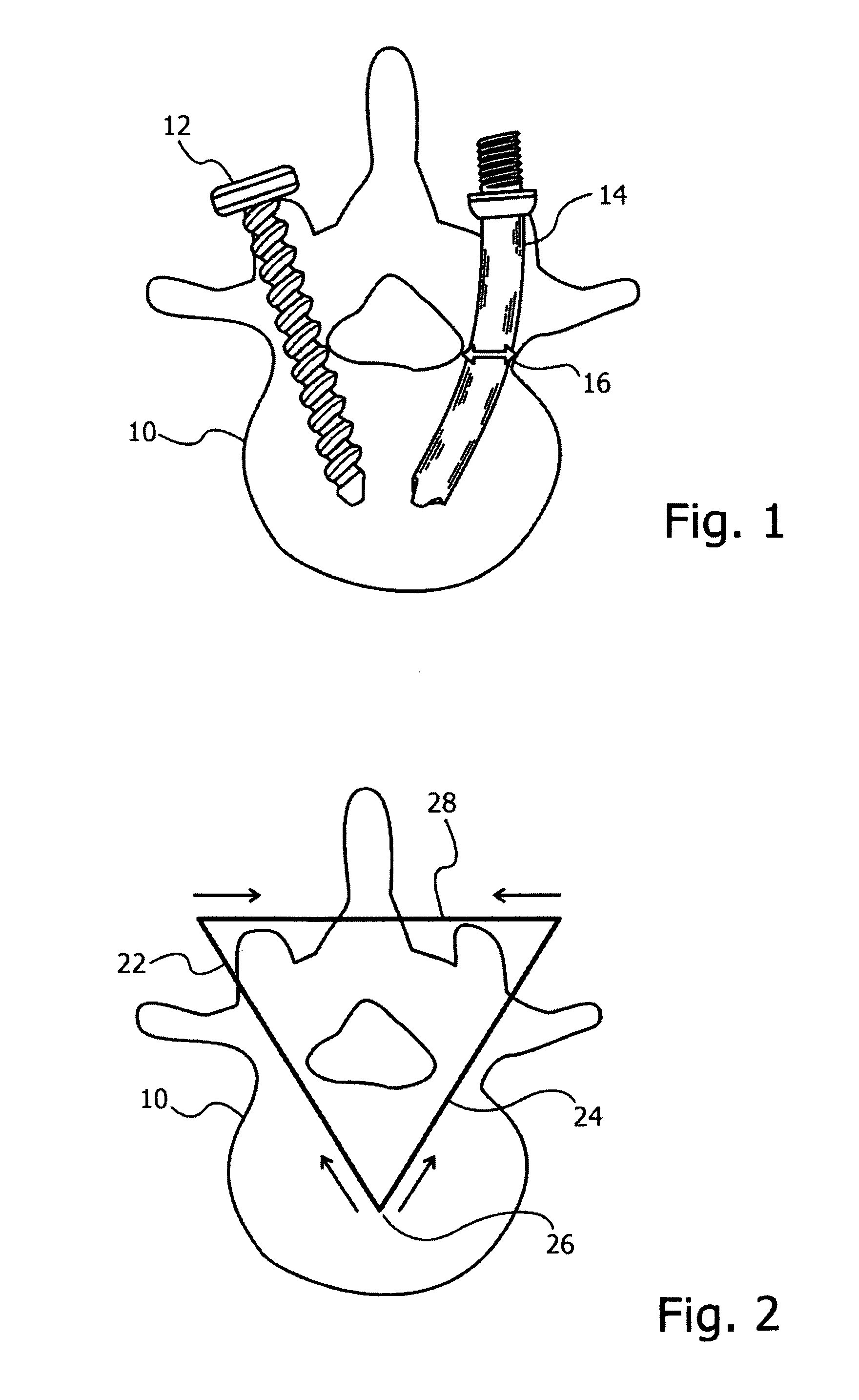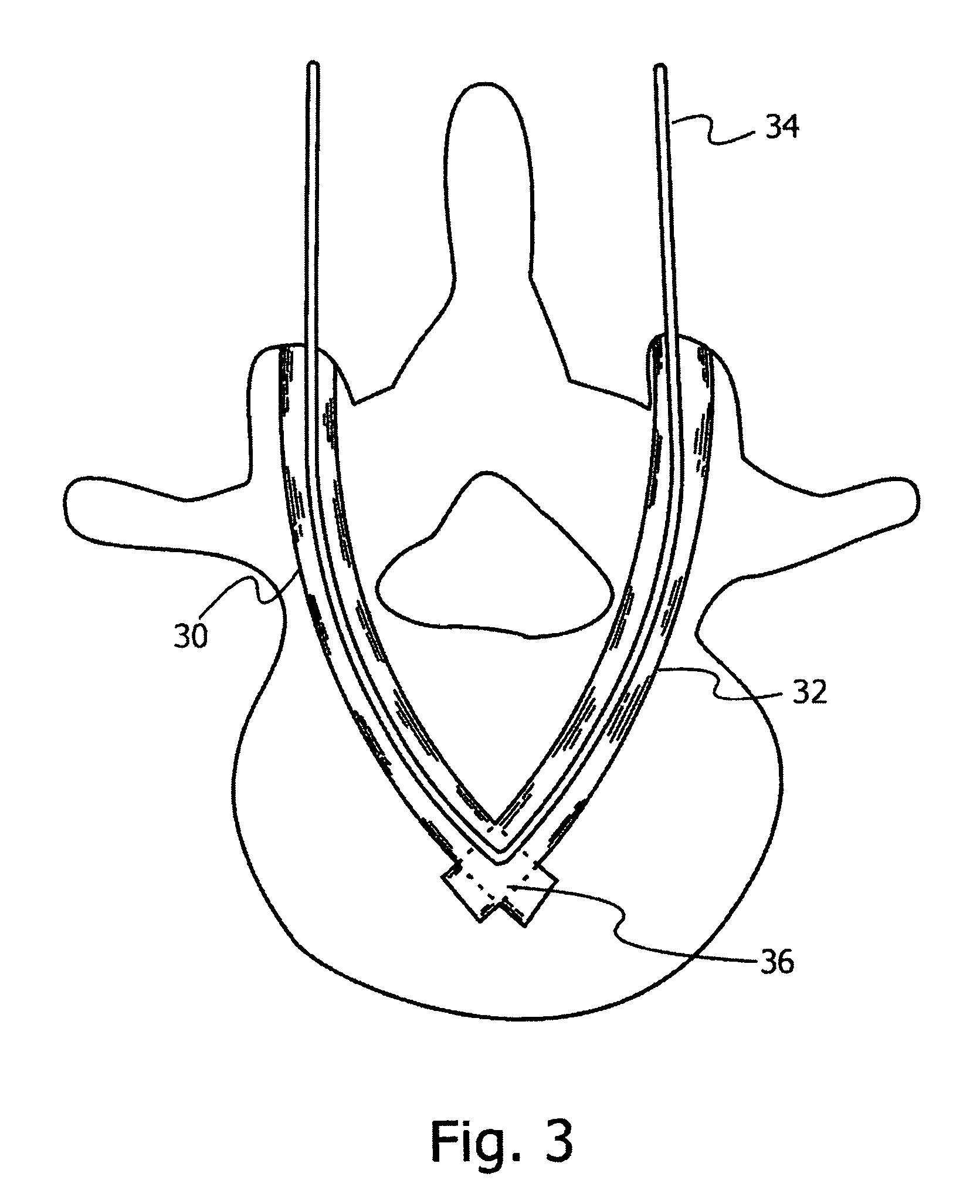Bone anchoring system
a bone anchoring and system technology, applied in the field of systems and methods, can solve the problems of no role in stabilizing rigidity, no effect of stabilizing rigidity, and additional danger of penetration of sensitive neurological structures, and achieve the effects of reducing pull-out problems, large diameter, and convenient deploymen
- Summary
- Abstract
- Description
- Claims
- Application Information
AI Technical Summary
Benefits of technology
Problems solved by technology
Method used
Image
Examples
Embodiment Construction
[0087]Reference is now made to FIG. 1, which is a schematic cross sectional drawing of a vertebra 10, comparing a prior art screw 12 and an arcuate arm 14 of the type described in this specification, both inserted into the vertebra through a pedicle. The screw dimensions are, by definition, a balance between the size of its threads and its core (the minor diameter). The threads provide pull-out resistance and the core provides the strength necessary to withstand bending, stretching or shearing. In addition, a screw advances forward by rotation and therefore needs to be straight. A trans-pedicular route in the vertebra is basically governed by the tunnel of the pedicle which limits the diameter of the structure that passes through it and to a certain degree, its course about the midsection of the pedicle. The need not to deviate from this course further limits the diameter of the screw. Thus, for a given screw member, its strength is determined by the material of which it is made, an...
PUM
 Login to View More
Login to View More Abstract
Description
Claims
Application Information
 Login to View More
Login to View More - R&D
- Intellectual Property
- Life Sciences
- Materials
- Tech Scout
- Unparalleled Data Quality
- Higher Quality Content
- 60% Fewer Hallucinations
Browse by: Latest US Patents, China's latest patents, Technical Efficacy Thesaurus, Application Domain, Technology Topic, Popular Technical Reports.
© 2025 PatSnap. All rights reserved.Legal|Privacy policy|Modern Slavery Act Transparency Statement|Sitemap|About US| Contact US: help@patsnap.com



